Japanese Meat and Potato Stew (Nikujaga) is one of the most iconic home-cooked dishes in Japan. This comforting dish features thinly sliced beef and chunks of potatoes simmered in a savory and sweet broth. It’s easy to make and tastes even better the next day!
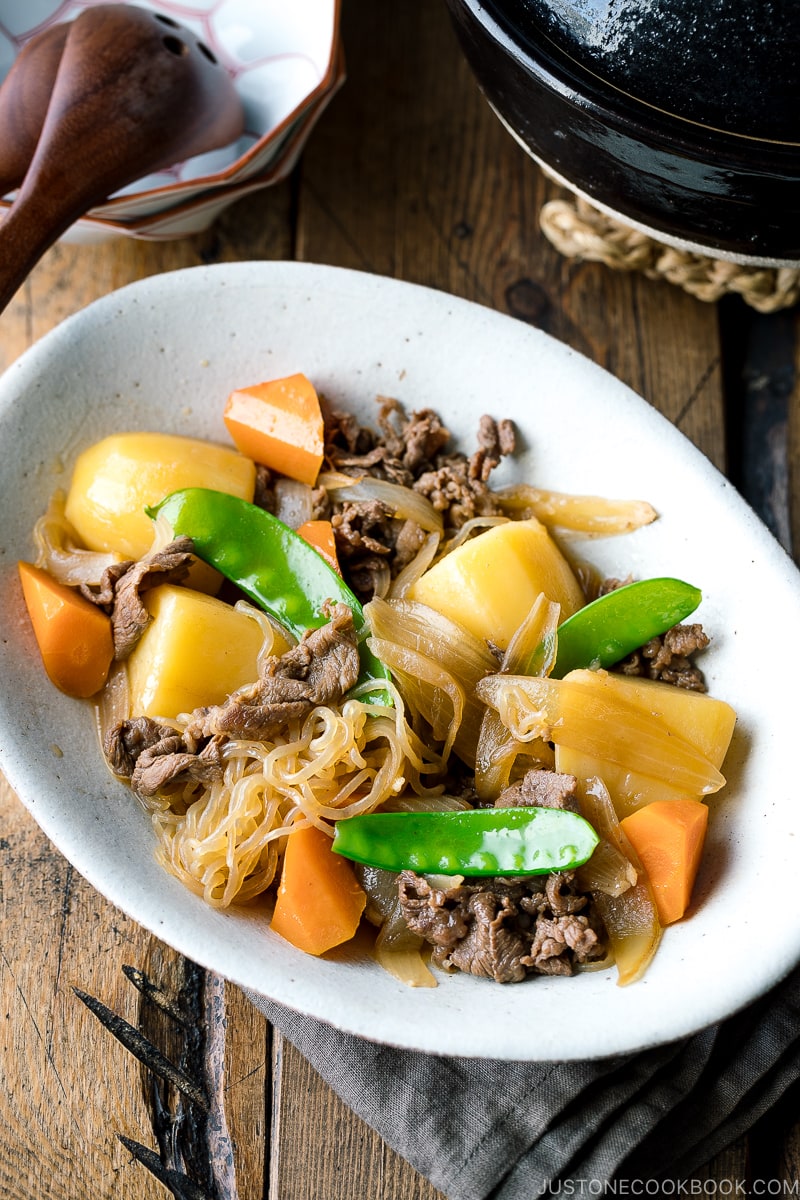
Nikujaga (肉じゃが) or Japanese Meat and Potato Stew is synonymous with good old home cooking in Japan. It’s the dish that everyone frequently eats at home and remembers fondly that their mom used to make. Let’s make a delicious Nikujaga that steals your family’s heart!
Table of Contents
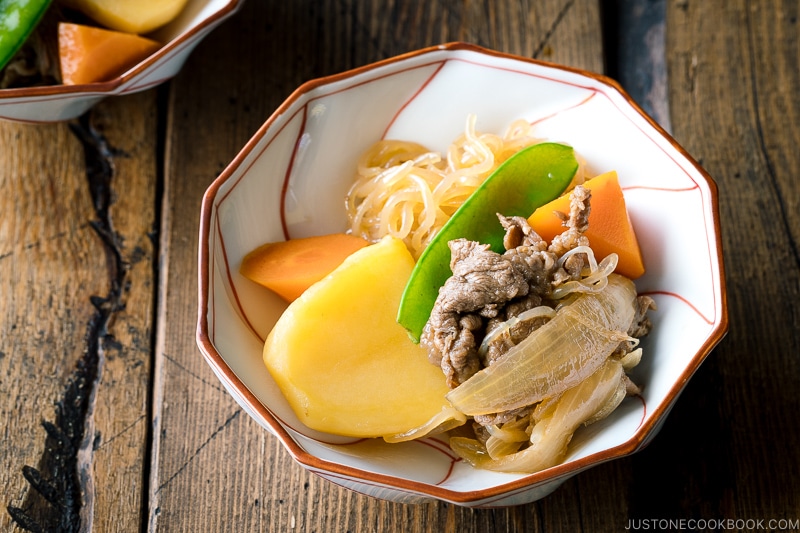
What is Nikujaga?
Nikujaga literally means meat (niku) and potatoes (jaga from jagaimo). Potatoes make up the majority of the dish, with some thinly sliced beef or pork, onion, shirataki noodles (ito konnyaku), and a colorful mix of vegetables. The ingredients are stewed in soy sauce, sugar, sake, and mirin, along with dashi (or water) in a pot, rendering a familiar Japanese flavor.
In western Japan, nikujaga typically features beef, while pork is more commonly used in eastern Japan. It’s a classic yoshoku (Western-influenced Japanese cuisine) dish that’s iconic in Japanese home cooking as ofukuro no aji (おふくろの味)—the taste of mother’s cooking. For many, nikujaga is an honest-to-goodness comfort food.
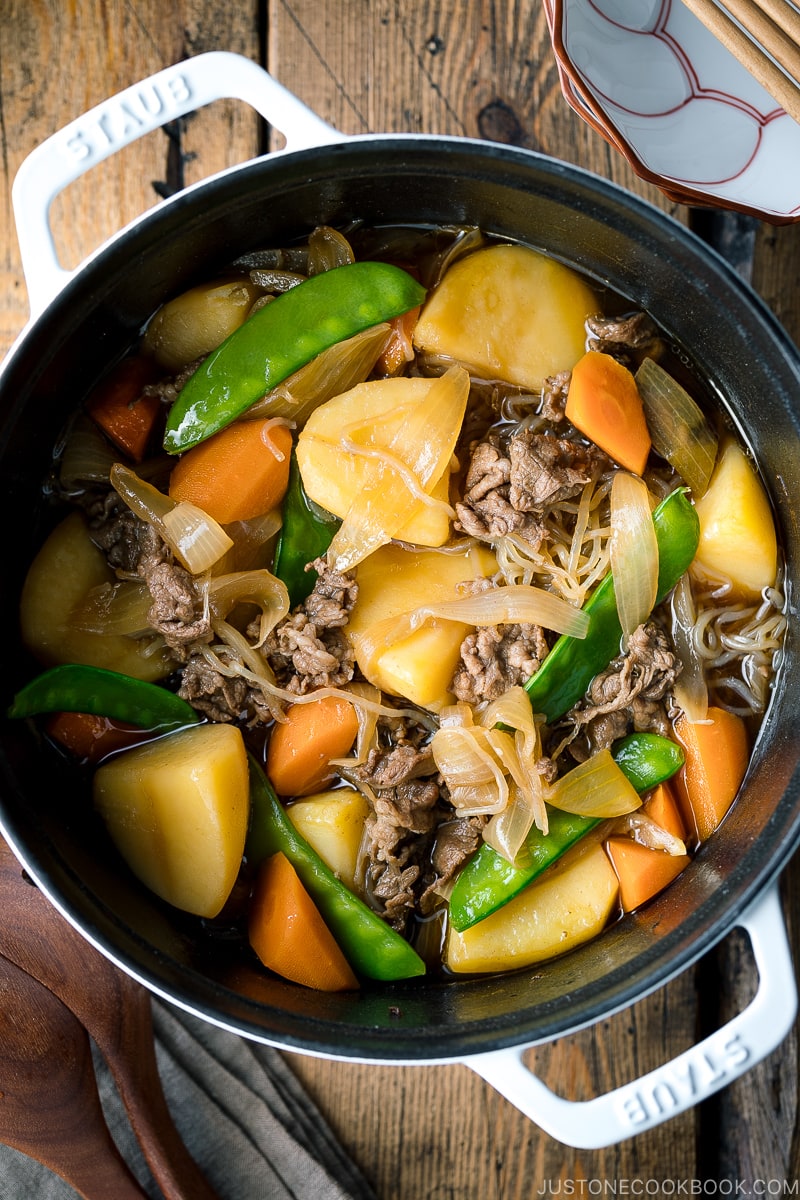
History of Nikujaga
Nikujaga originated in the Imperial Japanese Navy in the late 19th century. General Heihachiro Togo, who studied in Portsmouth, England in the late 1800s, asked the naval cook to create a version of the beef stew served in the British Royal Navy. As the chef had never tried beef stew before, so he invented his own version with soy sauce and sugar, similar to Sukiyaki.
That dish, called amani (甘煮) back then, was introduced to sailors as a highly nutritious food. The ingredients were easy to source as they are similar to the ones used in the famous Navy curry recipe. Nikujaga became popular in the Navy, and you can find the recipe in the “Navy kitchen textbook.”
Nikujaga didn’t appear on the table at home until the 1970s when beef and potatoes became more commonly available to the Japanese public. That’s also when beef stew and curry rice started to become popular and home cooks started to use those ingredients in their cooking.
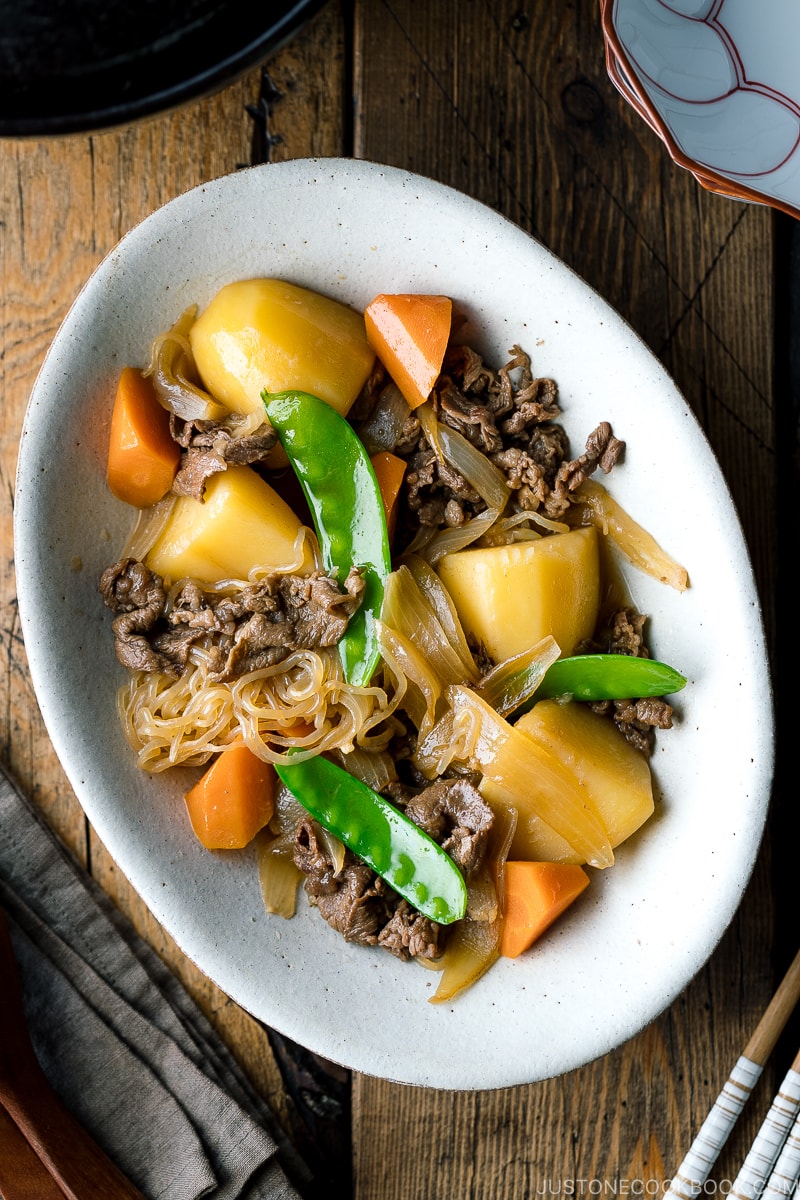
Ingredients You’ll Need
- potatoes – I use Yukon golds
- thinly sliced beef or pork – thinly sliced meat cooks faster; I use beef chuck or ribeye, or use thinly sliced pork; substitute with shiitake, king oyster, or portobello mushrooms for vegan/vegetarian
- onion
- shirataki noodles (ito konnyaku)
- carrot
- green vegetable – most commonly snow peas, green beans, or green peas
- seasonings – soy sauce, sugar, mirin, sake, and optional dashi (Japanese soup stock)
How To Make Nikujaga
- Blanch the green vegetable in a separate small pot of boiling water. Set aside for the last step.
- Cook the shirataki noodles according to package directions.
- Cook the onion wedges and then the meat in a large pot over medium heat.
- Add the potatoes and stir to coat them well with oil.
- Add the rest of the ingredients and seasonings, including the shirataki noodles.
- Simmer for 15 minutes.
- Let cool for 30–60 minutes.
- When ready to serve, add the blanched green vegetables and reheat gently.
Nikujaga tastes even better the next day! Store it in the refrigerator and reheat gently when you plan to serve it. See my full instructions in the recipe card below.
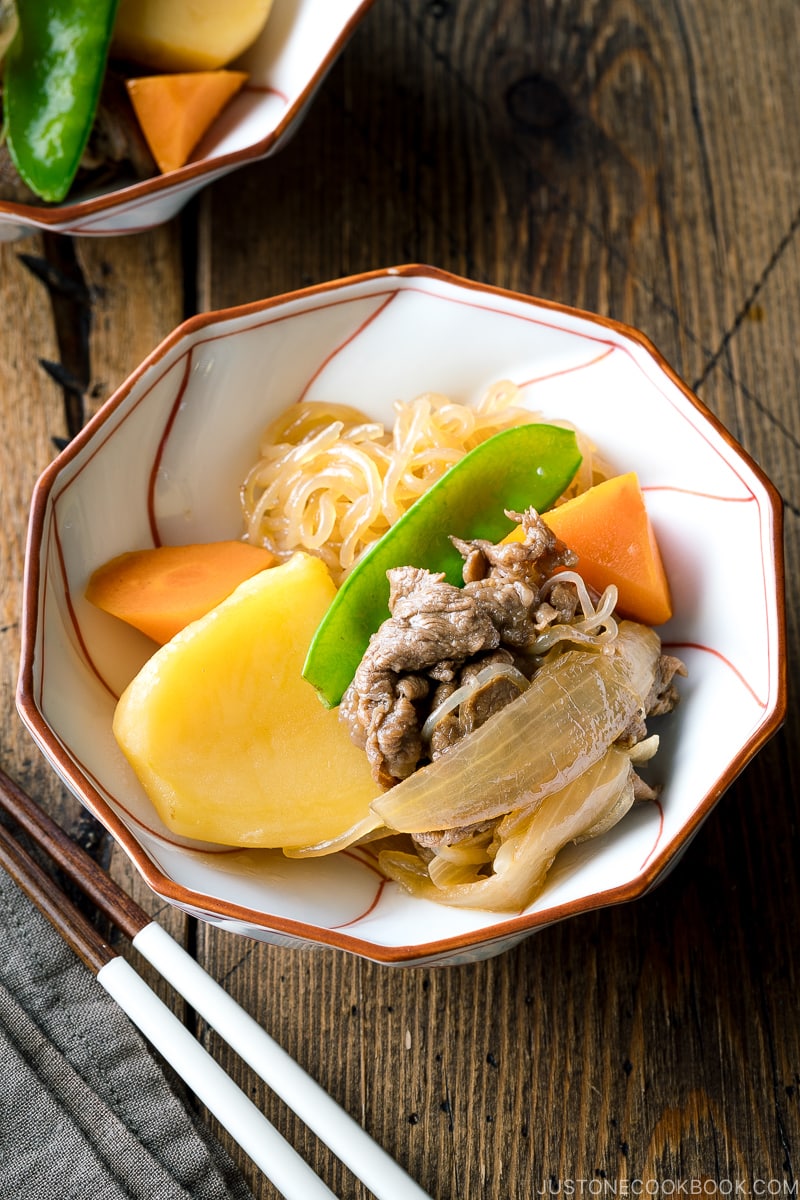
5 Important Tips To Make the Best Nikujaga
- Cut the ingredients the same size – The ingredients should be all cooked in 15 minutes or less. If you cut them too small or too large, the texture will either be mushy or undercooked.
- Use a bigger pot/pan – To make sure the ingredients absorb all the great flavors, it’s best to use a wide, big pan or pot so the ingredients won’t overlap too much and there is no need to mix frequently.
- Use an otoshibuta (drop lid) – This Japanese must-have tool keeps the ingredients in place while simmering so they will not move and break apart. It also helps to circulate the broth over the surface so you don’t need to mix while cooking. Don’t have one? Make one with aluminum foil or parchment paper!
- Let cool after simmering – While cooling down, the ingredients will absorb all the flavors. Reheat gently before serving.
- Add the green vegetable right before serving – I highly recommend blanching the green vegetables first, and reheating them right before serving. If you cook them with the other ingredients, the color will not stay bright green.
What to Serve with Nikujaga
- Rice: Steamed rice, Takikomi Gohan
- Soup: Miso Soup, Kakitama Jiru (Japanese Egg Drop Soup)
- Sides: Grilled Mackerel (if you want more protein), Spinach Ohitashi, Chilled Tofu, Green Bean Shiraae, Eggplant Agebitashi
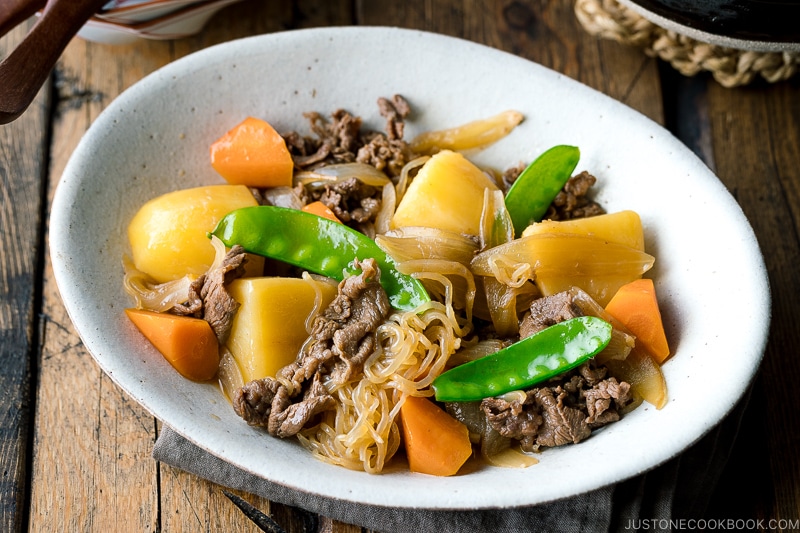
Sign up for the free newsletter delivered to your inbox and stay in touch with me on Facebook, Pinterest, YouTube, and Instagram for all the latest updates.
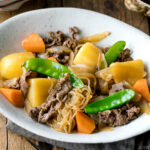
Nikujaga (Japanese Meat and Potato Stew)
Video
Ingredients
- 1 onion (8.8 oz, 250 g)
- 1 carrot (4.5 oz, 127 g)
- 3 Yukon gold potatoes (1.2 lb, 546 g)
- 8 pieces snow peas (or use green beans or green peas)
- 1 package shirataki noodles (7 oz, 200 g)
- ½ lb thinly sliced beef (such as ribeye) (or slice your own meat; you can use thinly sliced pork; substitute with shiitake, king oyster, or portobello mushrooms for vegan/vegetarian)
- 1 Tbsp neutral oil
For the Seasonings
- 2 cups dashi (Japanese soup stock) (use standard Awase Dashi, dashi packet or powder, or Vegan Dashi)
- 4 Tbsp mirin
- 4 Tbsp soy sauce
- 2 Tbsp sake
- 1 Tbsp sugar
Instructions
- Before You Start: Please note that this recipe requires 30 minutes of resting time.Gather all the ingredients.
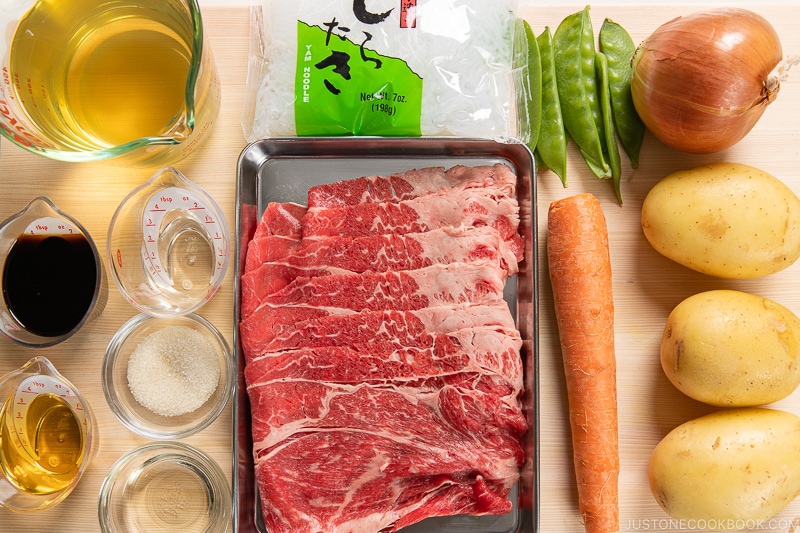
To Prepare the Ingredients
- Cut 1 onion in half, and cut each half into ½-inch (1.3 cm) wedges.
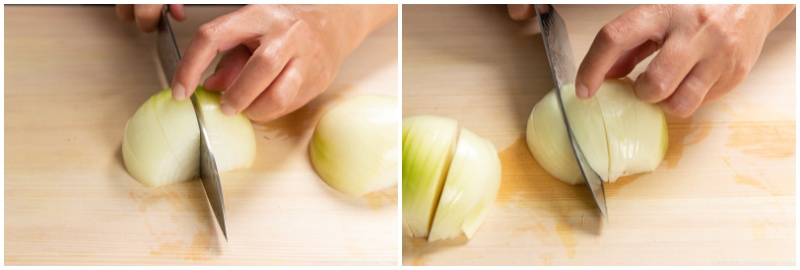
- Peel 1 carrot and cut it into 1-inch (2.5 cm) pieces. Here, I use a Japanese cutting technique called rangiri where we cut the carrot diagonally while rotating it a quarter turn between cuts. This helps to create more surface area so it will cook faster and absorb more flavor.
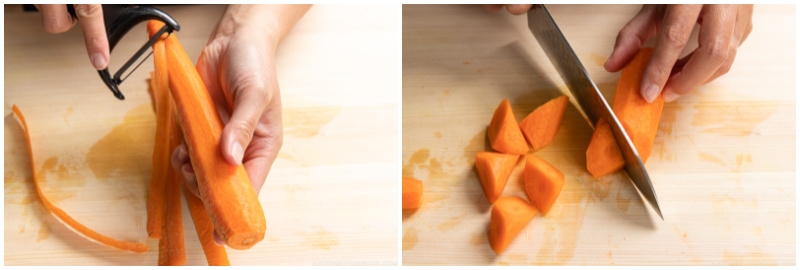
- Cut each of the 3 Yukon gold potatoes into quarters. Tip: Yukon golds keep their shape better during simmering, but I sometimes use russet potatoes, which tend to break easily but absorb flavors nicely.
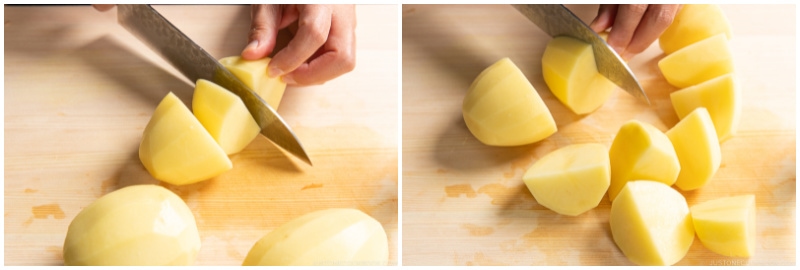
- Remove the sharp edges of the potatoes with a knife to create smooth corners. Then, soak the potatoes in water to remove the starch. Tip: We call this Japanese cutting technique mentori. This prevents the potatoes from breaking into pieces. If the potatoes have sharp edges, they are likely to bump into each other and break while simmering.
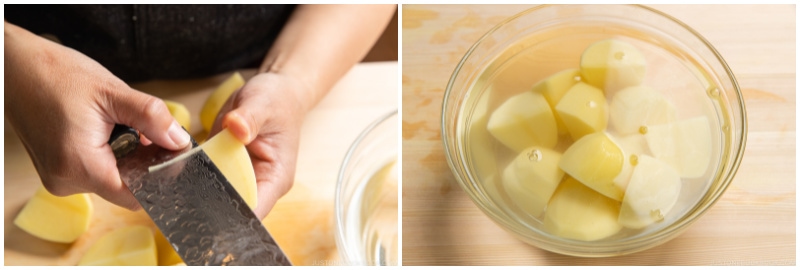
- Remove the strings from 8 pieces snow peas.
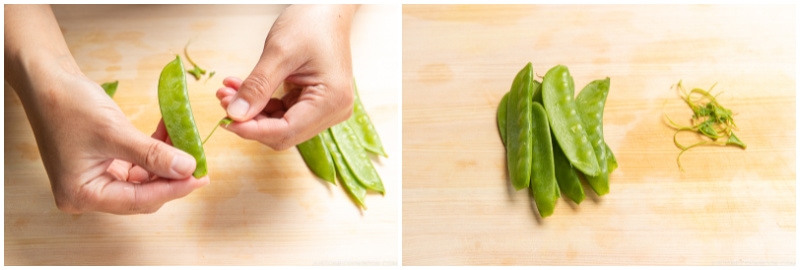
- Bring a small pot of water to a boil and add a pinch of salt. Add the snow peas.
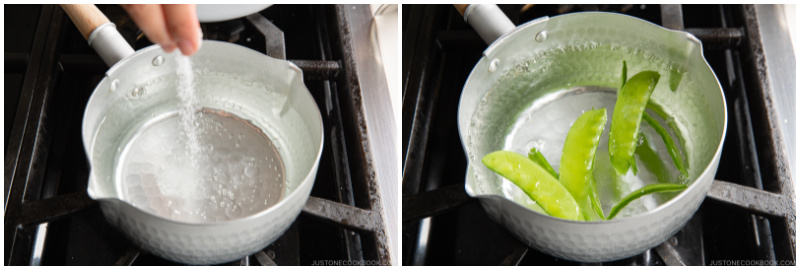
- Blanch them in the boiling water for 1 minute and take them out. Keep the water boiling.
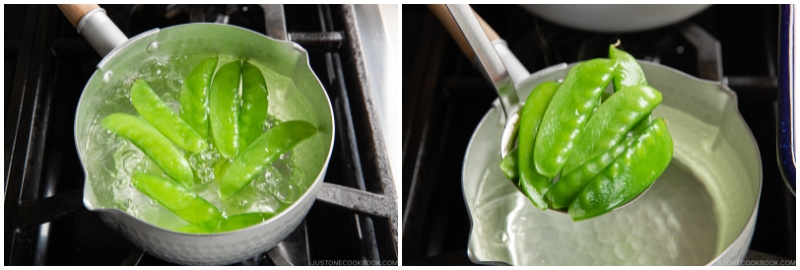
- Drain 1 package shirataki noodles and cut them roughly in half. Blanch the noodles in the pot of boiling water for 1 minute to remove any odor.
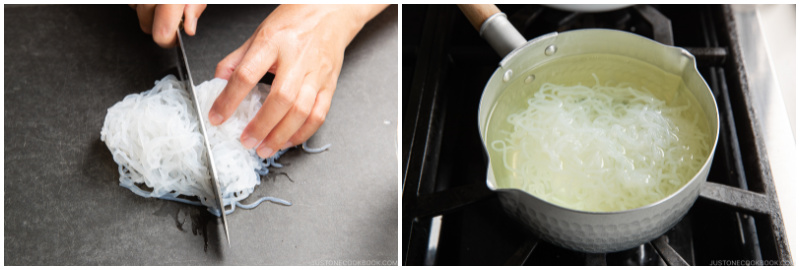
- Drain well and set aside. Cut the thinly-sliced beef in half or thirds (depending on the size) so that the pieces are about 3 inches (7.6 cm) wide.
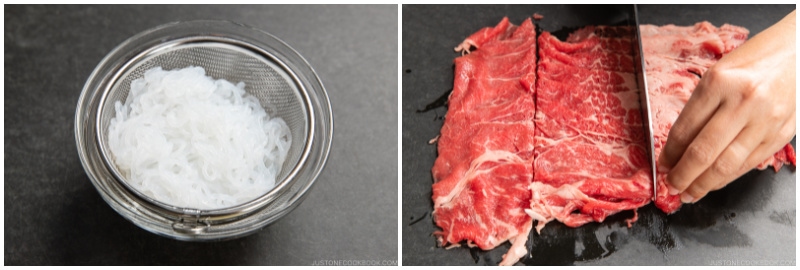
To Cook the Nikujaga
- Preheat a large pot or Dutch oven (I used a 4-QT Staub cocotte) on medium heat. Then, add 1 Tbsp neutral oil and sauté the onion wedges.
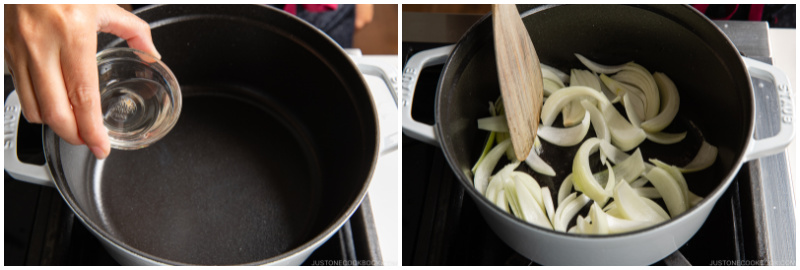
- When the onion wedges are coated with oil, add ½ lb thinly sliced beef (such as ribeye) and cook until no longer pink.
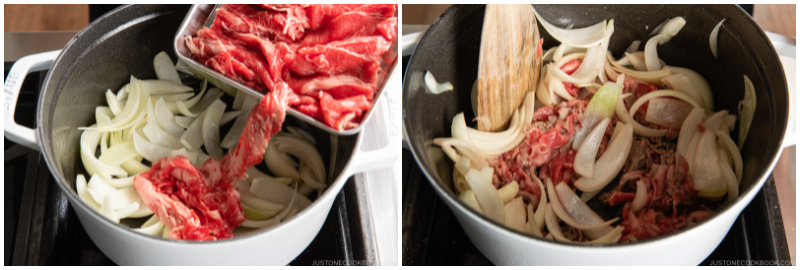
- Add the potatoes and coat them well with the cooking liquid. Tip: This coating will help keep the potatoes from breaking.
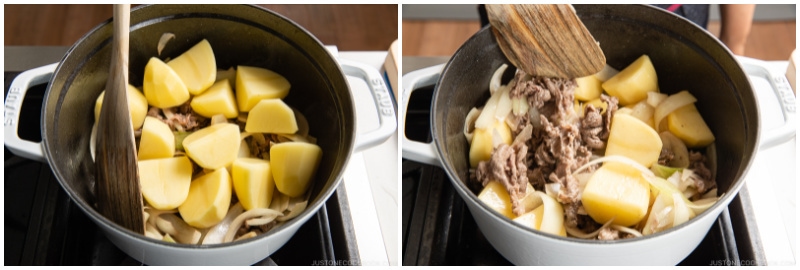
- Add the carrot pieces and shirataki noodles and mix everything together.
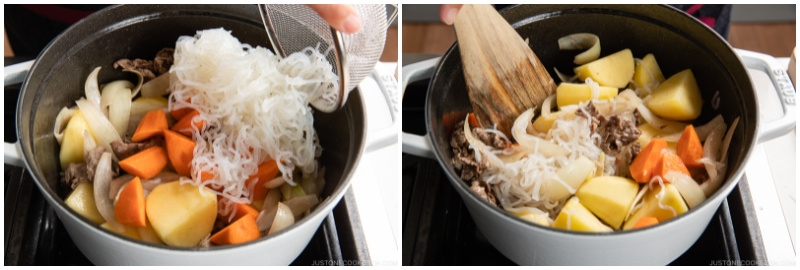
- Add 2 cups dashi (Japanese soup stock), making sure there‘s enough liquid to almost cover the ingredients (it doesn‘t have to fully cover the ingredients). If there‘s not enough liquid, add water.
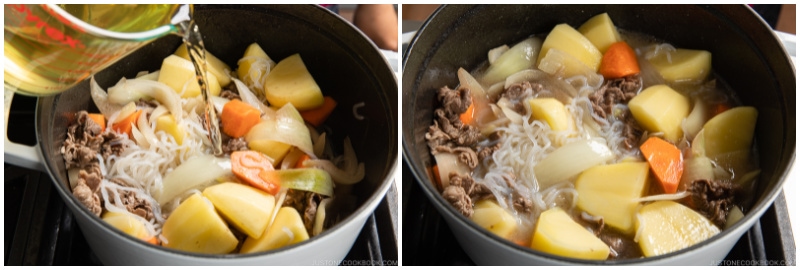
- Cover with a lid and continue to cook. Once boiling, skim the scum and foam from the surface with a fine-mesh skimmer.
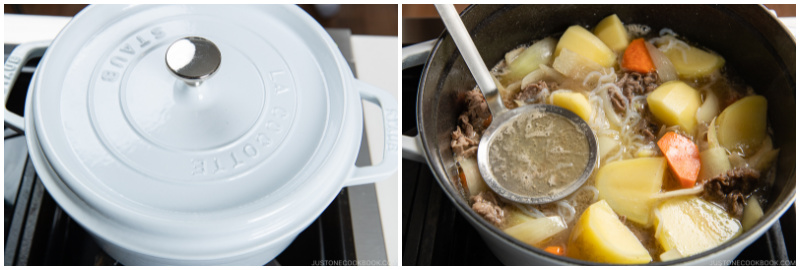
- Add 1 Tbsp sugar, 2 Tbsp sake, 4 Tbsp soy sauce, and 4 Tbsp mirin.
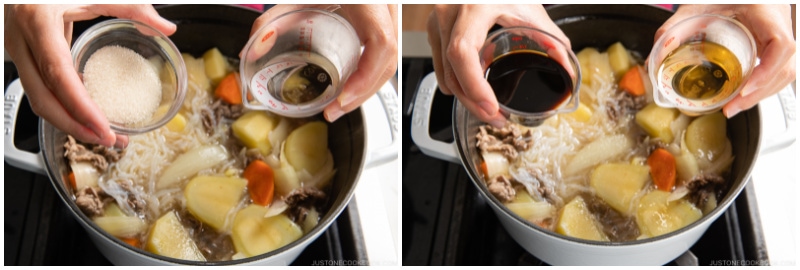
- Mix it all together and place an otoshibuta (drop lid) on top of the ingredients.
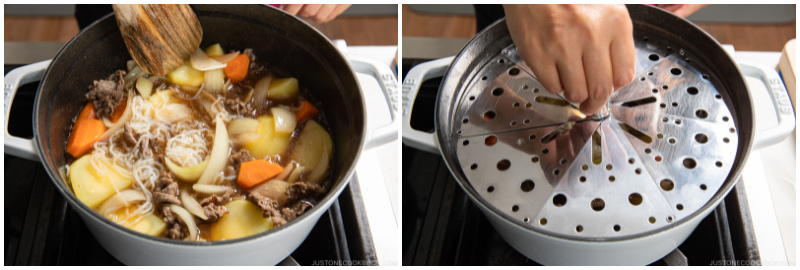
- Simmer on low heat for 12–14 minutes, or until a skewer pierces a potato easily. Tip: The otoshibuta holds the ingredients in place and is necessary to maintain the shape of the vegetables. They bump into each other and break easily when they are loose. Do not mix the ingredients while cooking; the otoshibuta will help distribute the cooking liquid and its flavors.
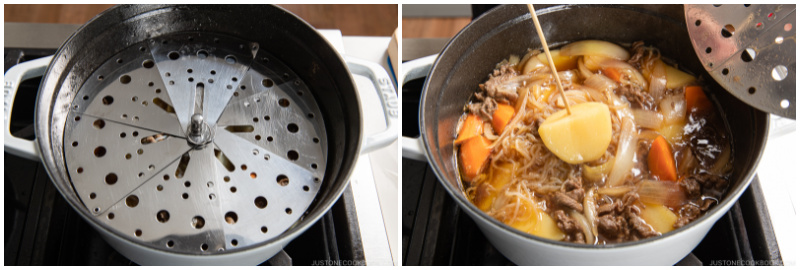
- Turn off the heat and remove the otoshibuta. Ideally, let the Nikujaga rest (uncovered) for 30–60 minutes before serving. The flavors will soak into the ingredients while cooling down.
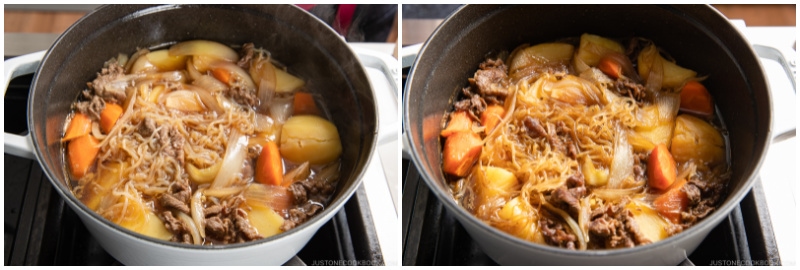
To Serve
- When you are ready to serve the Nikujaga, add the blanched snow peas to the pot and cover to reheat on medium heat. When simmering, reduce the heat and let it simmer for a few minutes. Tip: Add the snow peas right before serving to keep their bright color.
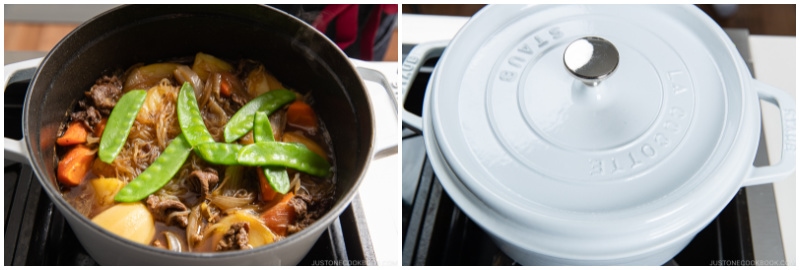
- Turn off the heat and serve the Nikujaga with some cooking liquid in a large serving bowl or individual bowls.
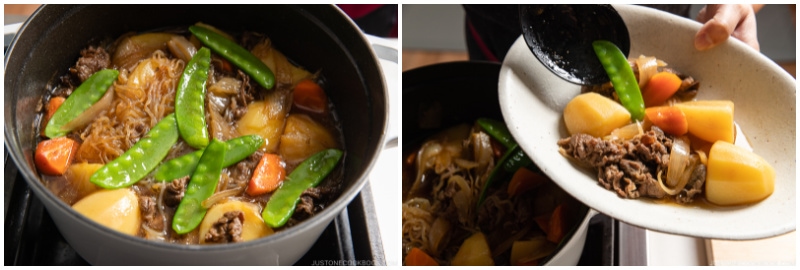
To Store
- You can keep the leftovers in an airtight container or in the pot and store in the refrigerator for up to 3–4 days. Nikujaga tastes even better on the second day! To freeze, remove the potatoes as their texture changes when frozen. You can keep it in the freezer for up to a month.
Nutrition
Editor’s Note: The post was originally published on April 19, 2012. New images and video have been added to the post and the content has been updated.
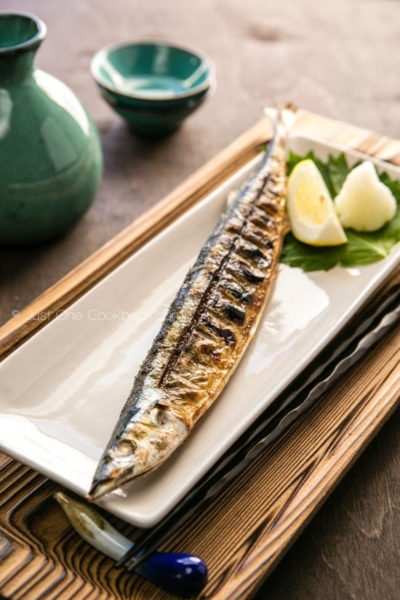
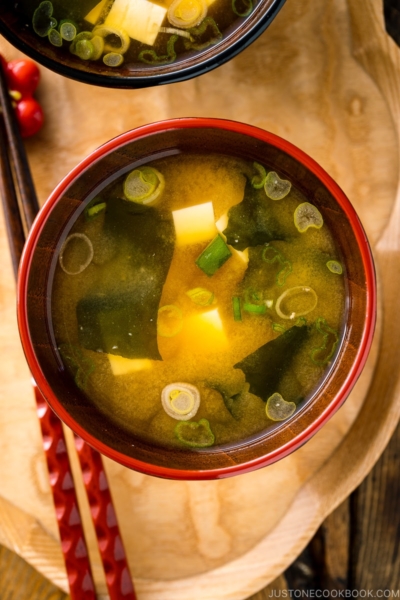
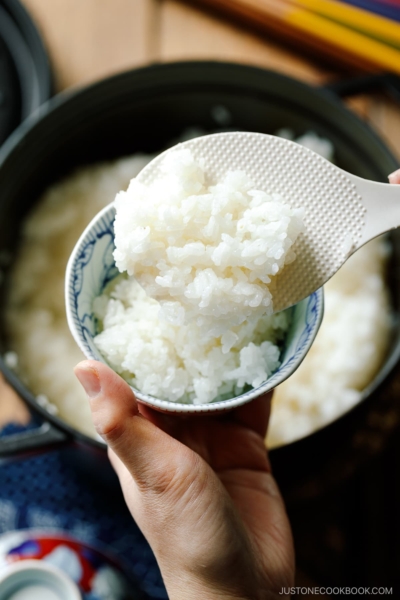
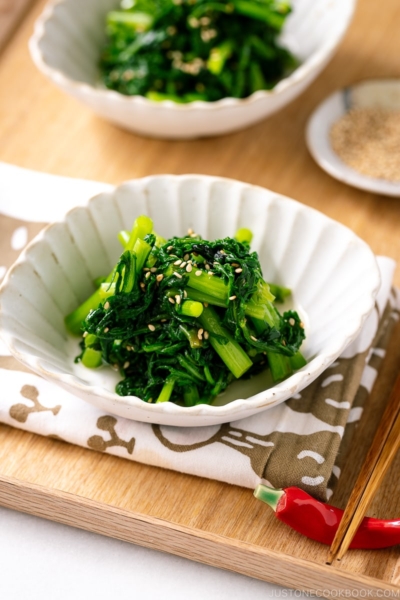





So delicious and flavourful, and easy to cook too. My family enjoys this every time I cook it, much as i will like to have some of it left for a tasty lunch the next day, this never happens as it always get polished off at once! Thank you for sharing this recipe with us 🙂
Hello, Serene. Thank you for trying Nami’s recipe.
We’re delighted your family liked this dish as much as we do! Thank you for sharing your experience with us!🥰 Happy cooking!
I love this recipe and always come back to it! I’ve been getting into meal prepping, so making large batches of my favorite recipes and freezing them to reheat. How would you suggest I reincorporate the potato if I were to freeze the recipe and then heat up at a later point? Cut up a fresh potato, cook, then add in the portion of nikujaga I saved? Thanks!
Hi, Katherine! Thank you for trying Nami’s recipe.
Yes. You can add the potato later. We hope your food preparing goes smoothly! Happy cooking! 🤗
I feel like i always forget to comment on your recipes, but i make so many of them, and this one is a favorite in my house. niku jaga is one of the first japanese recipes i ever made when i was young, but i had never made it on my own. the flavor of this brings me back, it’s so perfect, natsukashii.
Hello del ray! We are so happy to hear you enjoyed Nami’s recipe!
Thank you for trying her recipe and sharing your experience with us. Happy Cooking!
Well, it’s January and it’s -4°C outside. Ugh. But that means it’s time to make nikujaga! Yay! It’s one of my all-time favourite foods, and it’s so comforting on a cold day. Plus I can make extra and it’s good for a few days in the fridge. Turns out it freezes ok too, so I can just nuke it when I really don’t want to cook. Anyway, Nami, your recipe is excellent (although I prefer to make it with pork fillet and no noodles). I love how you explain everything so clearly, like the cutting methods and the drop lid, and you make it all really easy to follow. This is the first place I check whenever I need to find out anything to do with Japanese food (which is the world’s best cuisine, IMHO), so I just wanted to say thank you so much for your excellent recipes 🙂
Hello, there! Thank you for trying Nami’s recipe and for your kind words.🥰
Nami and all of us at JOC are delighted to hear that you enjoy Nami’s recipes, and our website is the first place to look for Japanese cuisine! We hope you will continue to enjoy Nami’s recipes. Please keep warm, and happy cooking!
Hi Just One Cookbook! I tried this recipe today and it was easy and delicious. It really hits the spot on a cold day. I bought the beef at Mitsuwa grocery store in the San Francisco Bay Area. The recipe calls for thinly sliced chuck or thinly sliced ribeye. The grocery store had some thinly sliced beef labeled “chuck roll”, some labeled “sukiyaki”, and some labeled “shabu shabu”. If we want to get really specific, what is the best type of thinly sliced beef that should be used for this recipe? I definitely want to make it again. Thanks!
Hello, Mich. Thank you for trying Nami’s recipe!
Sukiyaki or Shabu Shabu-style meat both go well with this recipe. It’s the difference in thickness, and it’s up to you.
Hopefully, this helps!
Can I substitute dashi with chicken broth or another type of broth?
Hello Sisi, Yes. You may use chicken broth or another type.
Thank you for trying Nami’s recipe! 🤗
This sounds like an excellent dish and I will be getting some of the ingredients real soon. I will come back with a report soon 😀
Hi Lee! Thank you for reading Nami’s post and trying her recipe!
We hope you enjoy Nikujaga. Happy Cooking!
In the categories you list at the top of the recipe, you tag this as “Classic Washoku”. But in the text, you call it “Classic Yoshoku”. Can’t really be both, can it? Really enjoy your site, by the way — my go-to for Japanese recipes.
Hello, John. Thank you for reading Nami’s post.
Like tempura, this dish has grown in popularity and is now considered a classic Washoku dish. That is why we label this Classic Washoku. We hope this made sense.😊